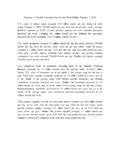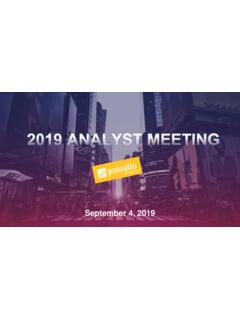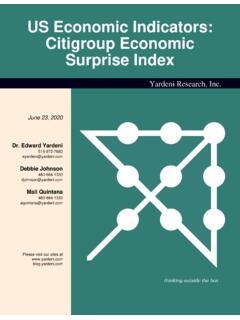Transcription of GLOBAL TUBERCULOSIS REPORT 2017 - who.int
1 GLOBAL . TUBERCULOSIS . REPORT . 2017 . Abbreviations aDSM active TB drug-safety monitoring and NCD noncommunicable disease management NFC near-field communication AIDS acquired immunodeficiency syndrome NHI national health insurance ART antiretroviral therapy NTP national TB programme BCG bacille Calmette-Gu rin OECD Organisation for Economic Co-operation and BRICS Brazil, Russian Federation, India, China and Development South Africa OIE World Organisation for Animal Health CFR case fatality ratio OOP out-of-pocket CHOICE CHOosing Interventions that are Cost-Effective PEPFAR President's Emergency Plan For AIDS Relief (WHO). PMDT programmatic management of drug-resistant CI confidence interval TB. CRS creditor reporting system P:N prevalence to notification (ratio). DST drug susceptibility testing PPM public-public and public-private mix EBA early bactericidal activity RR-TB rifampicin-resistant TB. EECA Eastern Europe and Central Asia SDG Sustainable Development Goal FIND Foundation for Innovative New Diagnostics SHA System of Health Accounts GAF GLOBAL Action Framework for TB Research SMS short message service GDP gross domestic product SPARKS Social Protection Action Research &.
2 GLOBAL Fund The GLOBAL Fund to Fight AIDS, TUBERCULOSIS Knowledge Sharing and Malaria SRL supranational reference laboratory HBC high-burden country TB TUBERCULOSIS HIV human immunodeficiency virus TBTC TB Trial Consortium IGRA interferon gamma release assay TDR Special Programme for Research and Training IHME Institute of Health Metrics and Evaluation in Tropical Diseases ILO International Labour Organization TNF tumour necrosis factor LED light-emitting diode TPP target product profile LMIC low- and middle-income country TST tuberculin skin test LPA line probe assay UHC universal health coverage LTBI latent TB infection UN United Nations MAMS-TB multi-arm, multi-stage TB UNAIDS Joint United Nations Programme on HIV/AIDS. MDG Millennium Development Goal UNICEF United Nations Children's Fund MDR/RR-TB multidrug-resistant TB or rifampicin-resistant US United States (but isoniazid-susceptible) TB USAID US Agency for International Development MDR-TB multidrug-resistant TB, defined as resistance VICTORY Viet Nam Integrated Center for TB and to rifampicin and isoniazid Respirology Research M:F male to female (ratio) VR vital registration MoH ministry of health WHO World Health Organization MOLISA Ministry of Labour Invalids and Social Affairs WRD WHO-recommended rapid diagnostic (Viet Nam).
3 XDR-TB extensively drug-resistant TB. iv GLOBAL TUBERCULOSIS REPORT 2017 . LEAVE. NO ONE. BEHIND UNITE TO END TB. CHAPTER 1. Introduction TUBERCULOSIS (TB) has existed for millennia and remains a major (OECD); the World Bank, for development indicators; and the GLOBAL health problem. It causes ill-health for approximately WHO national health accounts database. All data are stored 10 million people each year and is one of the top ten causes of in WHO's GLOBAL TB death worldwide. For the past 5 years, it has been the leading The years 2017 and 2018 are landmark ones for GLOBAL cause of death from a single infectious agent, ranking above and national efforts to end TB. In November 2017 , WHO will This is despite the fact that, with a timely diagnosis host the first GLOBAL Ministerial Conference on TB in Moscow, and correct treatment, most people who develop TB disease Russian Federation, with the theme of ending TB in the era can be cured. Basic facts about TB are summarized in Box of the SDGs.
4 In the second half of 2018, this will be followed WHO has published a GLOBAL TB REPORT every year since by the first UN General Assembly high-level meeting on 1997. The main aim of the REPORT is to provide a comprehensive TB, at which a multisectoral approach to ending TB and an and up-to-date assessment of the TB epidemic, and of associated multisectoral accountability framework will be progress in prevention, diagnosis and treatment, at GLOBAL , discussed by Heads of State. This GLOBAL TB REPORT , published regional and country levels. This is done in the context of shortly in advance of the WHO Ministerial Conference, recommended GLOBAL TB strategies and associated targets, as provides the latest data and analysis to inform discussions well as broader development goals set by the United Nations and deliberations at both events. (UN). For the period 2016 2035, these are the End TB Strategy Chapter 2 provides an overview of the SDGs, the End TB. and Sustainable Development Goals (SDGs).
5 Strategy, and a new TB-SDG monitoring framework developed The End TB Strategy was endorsed by WHO's 194 Member by WHO in 2017 . This framework goes beyond the TB-specific States during the 2014 World Health Assembly, and is for the indicators of the End TB Strategy and the SDG target that is period 2016 2035. The SDGs were adopted by UN Member specific to TB, focusing attention on 14 other indicators under States in September 2015, and are for the period 2016 2030. seven SDGs that will influence the future course of the TB. The SDGs and the End TB Strategy share a common aim: to epidemic. Chapter 3 provides estimates of TB disease burden, end the GLOBAL TB epidemic. Targets set in the End TB Strategy and Chapter 4 provides data on diagnosis and treatment of include a 90% reduction in TB deaths and an 80% reduction TB, HIV-associated TB and drug-resistant TB, for the period in TB incidence by 2030, compared with 2015. 2000 2016. The topics of Chapter 5 and Chapter 6 are TB. As usual, the 2017 GLOBAL TB REPORT is based primarily prevention services and TB financing, respectively.
6 Chapter 7. on data gathered from countries and territories. WHO has assesses progress towards universal health coverage and implemented annual rounds of GLOBAL TB data collection since analyses the latest status of, and trends in, other indicators 1996, with an online system2 used since 2009. In 2017 , this in the TB-SDG monitoring framework. Chapter 8 discusses TB. system was opened for reporting in April. Following the May research and development, which is critical to achieving the deadline for reporting, and subsequent review and follow- technological breakthroughs required to end TB. up of submitted data between June and August, data were The REPORT also has four annexes. Annex 1 describes the available for 201 countries and territories that collectively online WHO GLOBAL TB database and provides further details account for more than 99% of the world's population and about the 2017 round of GLOBAL TB data collection. Annex 2. estimated TB cases. Data reported in 2017 were analysed contains country profiles for the 30 high TB burden countries alongside data collected in previous rounds of GLOBAL TB (profiles for other countries are available online4) and Annex data collection.
7 Other data sources used in the REPORT include 3 contains GLOBAL and regional profiles. Annex 4 provides data the HIV department in WHO and the Joint United Nations tables that give details of key indicators for the most recent Programme on HIV/AIDS (UNAIDS), which collect information year for which data or estimates are available, for all countries. about the provision of TB preventive treatment to people living with HIV, and about antiretroviral therapy for HIV- positive TB patients; the creditor reporting system of the Organisation for Economic Co-operation and Development 1 3. Further details are provided in Chapter 3. Further details are provided in Annex 1. 2 4. GLOBAL TUBERCULOSIS REPORT 2017 5. Basic facts about TB. BOX TB is an infectious disease caused by the bacillus first recommended by WHO in 2008; the second-line Mycobacterium TUBERCULOSIS . It typically affects the LPA was first recommended in May 2016. Culture-based lungs (pulmonary TB) but can also affect other sites methods currently remain the reference standard for (extrapulmonary TB).
8 The disease is spread when people drug susceptibility testing. who are sick with pulmonary TB expel bacteria into Without treatment, the mortality rate from TB is high. the air, for example by coughing. Overall, a relatively Studies of the natural history of TB disease in the absence small proportion (5 15%) of the estimated billion of treatment with anti-TB drugs (conducted before drug people infected with M. TUBERCULOSIS will develop TB. treatments became available) found that about 70% of disease during their lifetime. However, the probability individuals with sputum smear-positive pulmonary TB. of developing TB disease is much higher among people died within 10 years of being diagnosed, as did about infected with HIV, and also higher among people affected 20% of people with culture-positive (but smear-negative). by risk factors such as under-nutrition, diabetes, smoking pulmonary and alcohol consumption. Effective drug treatments were first developed in the Diagnostic tests for TB disease include the following: 1940s.
9 The currently recommended treatment for cases ! Rapid molecular tests The only rapid test for of drug-susceptible TB is a 6-month regimen of four diagnosis of TB currently recommended by WHO first-line drugs: isoniazid, rifampicin, ethambutol and is the Xpert MTB/RIF assay (Cepheid, USA). It can pyrazinamide. The GLOBAL TB Drug Facility supplies a provide results within 2 hours, and was initially complete 6-month course for about US$ 40 per person. recommended (in 2010) for diagnosis of pulmonary TB Treatment success rates of at least 85% for cases of in adults. Since 2013, it has also been recommended drug-susceptible TB are regularly reported to WHO by its for use in children and to diagnose specific forms of 194 Member States. Treatment for rifampicin-resistant TB. extrapulmonary TB. The test has much better accuracy (RR-TB) and multidrug-resistant TB (MDR-TB)b is longer, than sputum smear microscopy; and requires more expensive and more toxic drugs. Until early 2016, the treatment regimens recommended !
10 Sputum smear microscopy Developed more than 100. by WHO typically lasted for 20 months, and cost about years ago, this technique requires the examination of US$ 2000 5000 per person. As a result of new evidence sputum samples using a microscope to determine the from several countries, WHO issued updated guidance in presence of bacteria. In the current case definitions May 2016. Shortened regimens of 9 12 months are now recommended by WHO, one positive result is required recommended for patients (other than pregnant women). for a diagnosis of smear-positive pulmonary TB;. with pulmonary RR-TB or MDR-TB that is not resistant to ! Culture-based methods The current reference second-line drugs. The cost of a shortened drug regimen standard, they require more developed laboratory is about US$ 1000 per person. The latest data reported capacity and can take up to 12 weeks to provide to WHO show a treatment success rate for MDR-TB of results. 54%, globally, reflecting high rates of loss to follow-up, unevaluated treatment outcomes and treatment failure.















